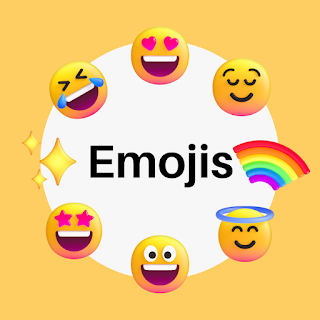Emojis: Adding Emotion to Texts and Communication
The use of emojis in digital communication has become indispensable. These small images and symbols have transformed the way we express our emotions and convey meaning in our text-based conversations. From social media posts to text messages, emojis have invaded our digital world and have become a universal language that transcends borders and cultures. But how did emojis come to be, and why are they so popular? In this blog, I will explore the history of emojis, their rise to fame, and their impact on digital communication.
Origins of Emojis
The first emoji was created in 1999 by Shigetaka Kurita, a Japanese designer who was working for the mobile phone company NTT Docomo. Kurita noticed that text messages lacked emotional nuance, and he wanted to create a way for people to express their emotions more effectively.
His solution was to create a set of simple, pixelated images that could be used in place of words. Kurita's first set of emojis consisted of 176 images that included basic smiley faces, hearts, and weather symbols. These early emojis were designed for small, monochrome screens, and their simplicity made them easy to understand and use.
The Rise of Emojis
Emojis became popular in Japan in the early 2000s, and they quickly spread to other countries. However, it wasn't until 2010, when Apple introduced an emoji keyboard on the iPhone, that emojis started to gain mainstream popularity. With the rise of social media platforms like Twitter, Facebook, WhatsApp, and Instagram, emojis became a ubiquitous part of online communication.
Today, there are over 3,000 emojis available, and new ones are added every year. Emojis are used to express a wide range of emotions, from happiness and sadness to anger and frustration. They can also be used to convey information, such as weather conditions, food items, and transportation options.
Emojis and Culture
Emojis have become a global phenomenon, but they have also had a significant impact on culture. Emojis have helped to break down language barriers and have created a new form of digital communication that is accessible to people of all ages and backgrounds.
Emojis have also become a part of popular culture. From movie references to celebrity emoji collaborations, emojis have become a way to express our fandom and connect with others who share our interests.
Emojis and Business
The rise of emojis has also had a significant impact on businesses. Companies have started to use emojis in their marketing campaigns, and some have even created their own branded emojis. For example, Coca-Cola created a set of emojis that featured its iconic red and white logo, while McDonald's created a set of emojis that featured its most popular menu items.
Emojis have also become a part of customer service interactions. Companies have started to use emojis in their chatbots and automated messaging systems to create a more engaging and personalized experience for their customers.
Celebration of Emojis
The emojis are celebrated through World Emoji Day, which takes place annually on July 17th. The day was first created by Jeremy Burge, the founder of Emojipedia, in 2014 and has since become a global phenomenon.
World Emoji Day is celebrated in various ways, with social media platforms and companies creating special content and promotions. Some of the most common ways to celebrate World Emoji Day include:
Sharing Emojis on Social Media: Social media platforms like Twitter, Instagram, and Facebook encourage users to share their favorite emojis and create their own emoji-themed posts using the hashtag #WorldEmojiDay.
Emoji-Themed Events: Some companies and organizations host special events to celebrate World Emoji Day, such as emoji-themed parties, exhibitions, and competitions.
Emoji Merchandise: Many companies create special merchandise to celebrate World Emoji Day, such as clothing, accessories, and stickers featuring popular emojis.
New Emoji Releases: Often, World Emoji Day is used as an opportunity to announce new emojis that are coming to various platforms, such as the latest updates from the Unicode Consortium.
Controversy
Emojis have come a long way since their humble beginnings in 1999. Despite their popularity, there are some concerns about the overuse of emojis and the impact that they may have on language and communication skills.
Some argue that emojis can make us lazy communicators, relying on images instead of words to express ourselves. Others worry that emojis may be contributing to the erosion of language skills, particularly among younger generations who may not be developing strong written communication skills.
The Future of Emojis
As technology continues to evolve, so too will emojis. There are already signs that emojis are becoming more sophisticated. For example, Apple's Animojis and Memojis use facial recognition technology to create 3D avatars that can mimic a user's facial expressions and movements.
There is also growing interest in creating more inclusive and diverse emojis. In 2015, the Unicode Consortium introduced skin tone modifiers for emojis, allowing users to select a range of skin tones for certain emojis. Since then, there have been calls for more diverse representation in emojis, including the inclusion of disabled people, gender-neutral emojis, and emojis that represent different cultures and religions.
However, it is important to remember that emojis are not a replacement for language but rather a complement to it. Emojis can help add emotional nuance and context to our messages, but they should not be used in place of words altogether.
Conclusion
In conclusion, emojis have become a universal part of digital communication, and their impact on culture and businesses cannot be denied. While there may be concerns about their overuse and impact on language skills, it is clear that emojis have transformed the way we communicate online and will likely continue to do so in the future. As technology and digital communication continue to evolve, it will be interesting to see how emojis continue to adapt and become an even more integral part of our online interactions.

.png)





Interesting 👍
ReplyDeleteThank u so much !!! 😊
DeleteCorrect. Emojis r not a replacement for language but rather a complement to it.
ReplyDeleteThank u so much !!! 😊
Delete